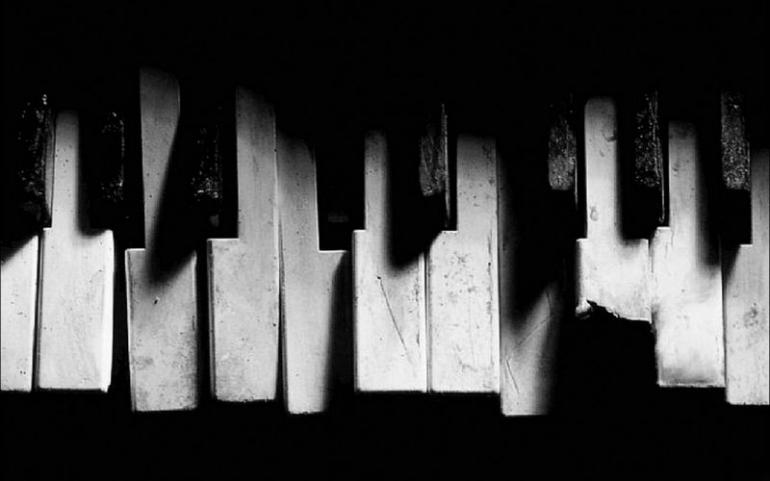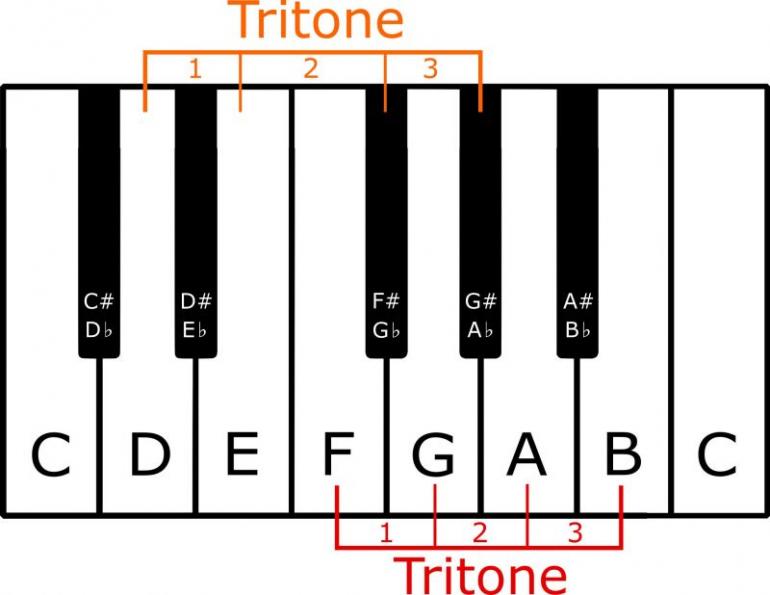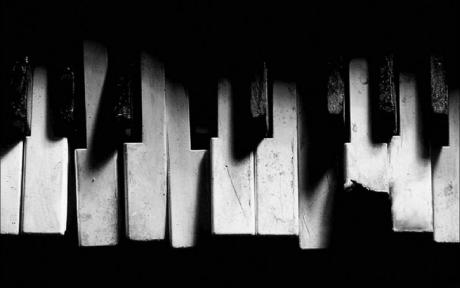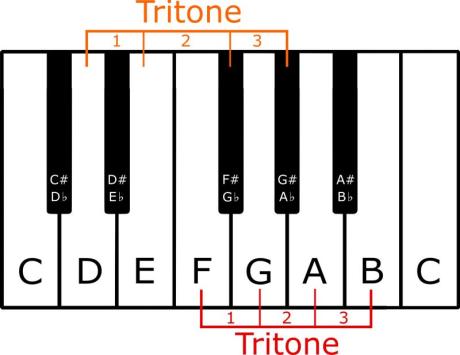Rockové klávesy - Tritone - diabolus in musica

In music theory, the tritone is a musical interval composed of three adjacent whole tones. For example, in the key of C major the tritone is F#. Tritones also occur naturally in major scales and are a very important component to how dominant chords resolve in western music. In the C major scale there is a naturally occurring tritone in the interval F to B and the F above it; see Exercise 1. The tritone is also commonly called a diminished fifth or augmented 4th. In twelve-equal temperament, the tritone divides the octave exactly in half.
In classical western music from the Middle Ages, the tritone was classified as the greatest dissonance. This interval was frequently avoided outside of dominant to tonic cadences and was even given the name “diabolus in musica” or the “devil in music” in the early 18th century. It is only with the romantic and modern classical music that composers started to use it freely.

Occurrences in chords
The tritone is a very tense sounding interval that feels like it needs to be resolved. The interval is present in dominant seventh chords between the third and seventh above the root. It usually resolves by step in contrary motion. Take a look at Exercise 2 to see how this works. As you can see, the F or dominant 7 of G7 resolves down to the 3rd of the tonic chord, C and the B or Major 3rd resolves upward to the tonic of C. This motion is one of the strongest in western music.
Tritones also became important in the development of jazz, especially when extensions of the 9th, 11th, and 13th are added to seventh chords. In jazz chords it's also very common to raise the 11th and use it with the perfect 5th below. For example a C7 #9 #11 13 chord is spelled from the bottom up; C, E, G, Bb, Eb, F#, A.

Tritone substitution
Also in jazz harmony, the tritone of the dominant chord is sometimes used as a substitute in a chord progression, This is known as a tritone substitution and is one of the most common chord and improvisation devices in Jazz. Take a look at Exercice 3. In Bar 2 the G7 chord has become a Db 7 chord using this technique. In reality it's very easy to think of this as a bass movement that moves down in 1/2 steps. The interesting thing about the tritone substitution is that many times the only note that changes in the chord is the bass note. For example, A right hand G7 #9 voicing of (from the bottom up) B, F, Bb is the same right hand voicing you can use for a Db 13 voicing.

The blue note
The tritone is also the “blue” note in a blues scale. Take the C blues scale (C, Eb, F, F#, G, Bb, C). Many blues players will lean on the F# while playing an improvisation. On keyboard, it sounds great to play the tritone at the same time as the the other notes in the blues scale, for example playing the F# while playing riffs with the F#. The blue note can be used with great expression. Take a look at Exercise 4 for an example of this technique.
Twelve-equal temperament: Česky se tomu říká „rovnoměrně temperované ladění“, které je dnes nejběžnější. Dříve se například u klávesových nástrojů používalo ladění přirozené, tedy takové, kde lze všechny intervaly vyjádřit jako poměr celých čísel. Problém je, že to pak ladilo jen v určitých tóninách. To právě vyřešilo rovnoměrně temperované ladění, kde je oktáva rozdělena na dvanáct stejně velkých dílů. Sice jsou tak některé tóny mírně rozladěné, ale více méně vám to ladí v jakékoli tónině.
Dominant to toniccadence: Slovo „kadence“ lze v hudbě použít ve více významech, Brian však mluví o kadenci harmonické. Jedná se o závěr harmonické posloupnosti, který dává posluchači pocit, že byla hudební myšlenka „vyslovena“ až do konce.
Resolve/resolution: Úzce souvisí s pojmem „kadence“. Brian často používá toto slovo, když mluví o harmonii. V hudbě „resolution“ znamená vlastně uvolnění napětí. Některé akordy dávají ve skladbě dojem harmonické nestability a jsou jen „přestupní stanicí“ na cestě k akordu, který nám dá pocit harmonického „rozřešení“ či „vyústění“. Právě toto „spění ke stabilnímu akordu“ se označuje jako „resolution“. Lze aplikovat i na melodii (nestabilní vs. stabilní tóny).
Blue note: V minulosti jsme si řekli, že tento výraz se používá pro tón, který je hraný níže, než by očekávala klasická hudební teorie, čímž se vytvoří pocit napětí. Ve skutečnosti jsem však měl říct „výše nebo níže“. Tam, kde to nástroj umožňuje, lze tón podladit či nadladit (např. vytažením struny na kytaře nebo kolečkem pitchbend na klávesách). U klavíru si musíme vystačit s půltónovým rozdílem.






